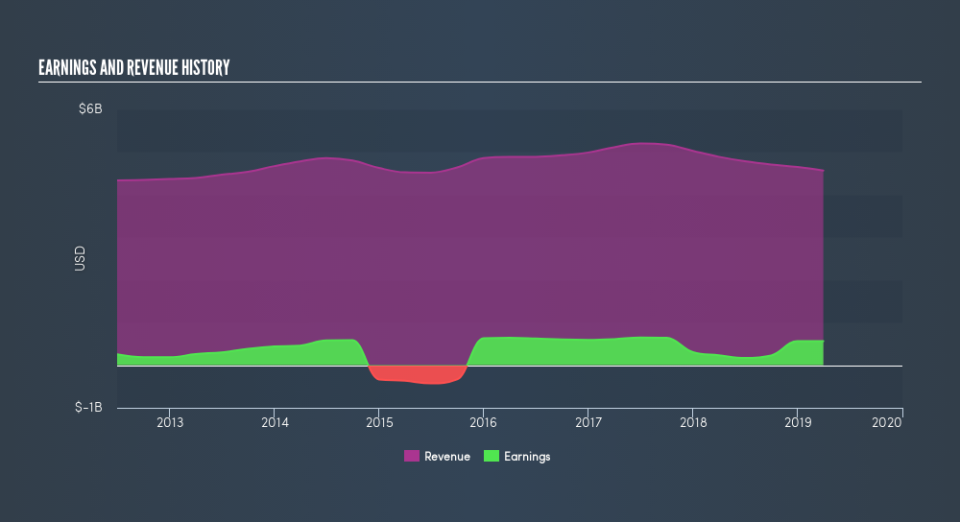Should Juniper Networks (NYSE:JNPR) Be Disappointed With Their 25% Profit?

Want to participate in a short research study? Help shape the future of investing tools and you could win a $250 gift card!
Buying a low-cost index fund will get you the average market return. But if you invest in individual stocks, some are likely to underperform. That's what has happened with the Juniper Networks, Inc. (NYSE:JNPR) share price. It's up 25% over three years, but that is below the market return. In the last year the stock price gained, albeit only 1.1%.
View our latest analysis for Juniper Networks
To quote Buffett, 'Ships will sail around the world but the Flat Earth Society will flourish. There will continue to be wide discrepancies between price and value in the marketplace...' By comparing earnings per share (EPS) and share price changes over time, we can get a feel for how investor attitudes to a company have morphed over time.
During the three years of share price growth, Juniper Networks actually saw its earnings per share (EPS) drop 1.1% per year. Based on these numbers, we think that the decline in earnings per share may not be a good representation of how the business has changed over the years. So other metrics may hold the key to understanding what is influencing investors.
You can only imagine how long term shareholders feel about the declining revenue trend (slipping at 2.3% per year). What's clear is that historic earnings and revenue aren't matching up with the share price action, very well. So you might have to dig deeper to get a grasp of the situation
The graphic below shows how revenue and earnings have changed as management guided the business forward. If you want to see cashflow, you can click on the chart.
Juniper Networks is a well known stock, with plenty of analyst coverage, suggesting some visibility into future growth. So we recommend checking out this free report showing consensus forecasts
What About Dividends?
It is important to consider the total shareholder return, as well as the share price return, for any given stock. Whereas the share price return only reflects the change in the share price, the TSR includes the value of dividends (assuming they were reinvested) and the benefit of any discounted capital raising or spin-off. Arguably, the TSR gives a more comprehensive picture of the return generated by a stock. As it happens, Juniper Networks's TSR for the last 3 years was 33%, which exceeds the share price return mentioned earlier. And there's no prize for guessing that the dividend payments largely explain the divergence!
A Different Perspective
Juniper Networks shareholders are up 3.9% for the year (even including dividends). But that return falls short of the market. The silver lining is that the gain was actually better than the average annual return of 3.6% per year over five year. This suggests the company might be improving over time. If you would like to research Juniper Networks in more detail then you might want to take a look at whether insiders have been buying or selling shares in the company.
If you would prefer to check out another company -- one with potentially superior financials -- then do not miss this free list of companies that have proven they can grow earnings.
Please note, the market returns quoted in this article reflect the market weighted average returns of stocks that currently trade on US exchanges.
We aim to bring you long-term focused research analysis driven by fundamental data. Note that our analysis may not factor in the latest price-sensitive company announcements or qualitative material.
If you spot an error that warrants correction, please contact the editor at editorial-team@simplywallst.com. This article by Simply Wall St is general in nature. It does not constitute a recommendation to buy or sell any stock, and does not take account of your objectives, or your financial situation. Simply Wall St has no position in the stocks mentioned. Thank you for reading.


